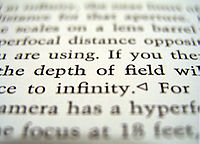
Photo from wikipedia
Defocus scanning, which causes a serious deterioration of the transverse resolution out of the focal zone, is a big obstacle to the application of optical-resolution photoacoustic (PA) endoscopy (OR-PAE) in… Click to show full abstract
Defocus scanning, which causes a serious deterioration of the transverse resolution out of the focal zone, is a big obstacle to the application of optical-resolution photoacoustic (PA) endoscopy (OR-PAE) in imaging internal hollow organs. However, the current solution to generate an adjustable focal length is inapplicable for in vivo imaging due to the greatly increased scanning time. In this study, by applying an elongated focus lens that produces Bessel beams to the OR-PAE, we developed a large-depth-of-field optical-resolution PA endoscope with a depth of focus of ∼8.6 mm in air, which can image targets at different depths without axial scanning, while maintaining a relatively constant transverse resolution. Ex vivo experimental results demonstrate the advantage of the endoscope to image biological tissues at different depths. Furthermore, an in vivo experiment presents three-dimensional vascular networks in the rabbit rectum, suggesting the potential of the endoscope for colorectal clinical applications.Defocus scanning, which causes a serious deterioration of the transverse resolution out of the focal zone, is a big obstacle to the application of optical-resolution photoacoustic (PA) endoscopy (OR-PAE) in imaging internal hollow organs. However, the current solution to generate an adjustable focal length is inapplicable for in vivo imaging due to the greatly increased scanning time. In this study, by applying an elongated focus lens that produces Bessel beams to the OR-PAE, we developed a large-depth-of-field optical-resolution PA endoscope with a depth of focus of ∼8.6 mm in air, which can image targets at different depths without axial scanning, while maintaining a relatively constant transverse resolution. Ex vivo experimental results demonstrate the advantage of the endoscope to image biological tissues at different depths. Furthermore, an in vivo experiment presents three-dimensional vascular networks in the rabbit rectum, suggesting the potential of the endoscope for colorectal clinical applications.
Journal Title: Applied Physics Letters
Year Published: 2019
Link to full text (if available)
Share on Social Media: Sign Up to like & get
recommendations!